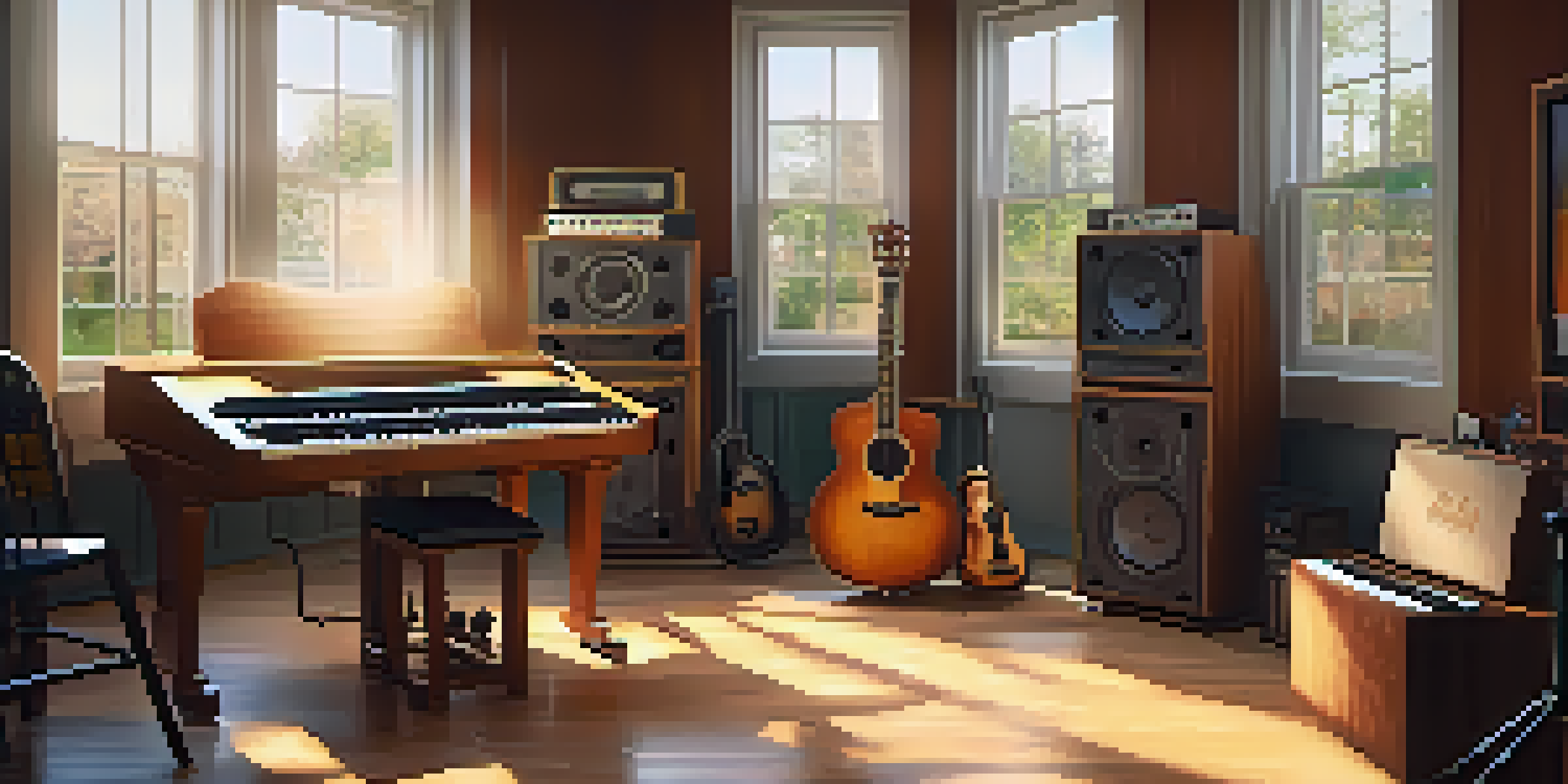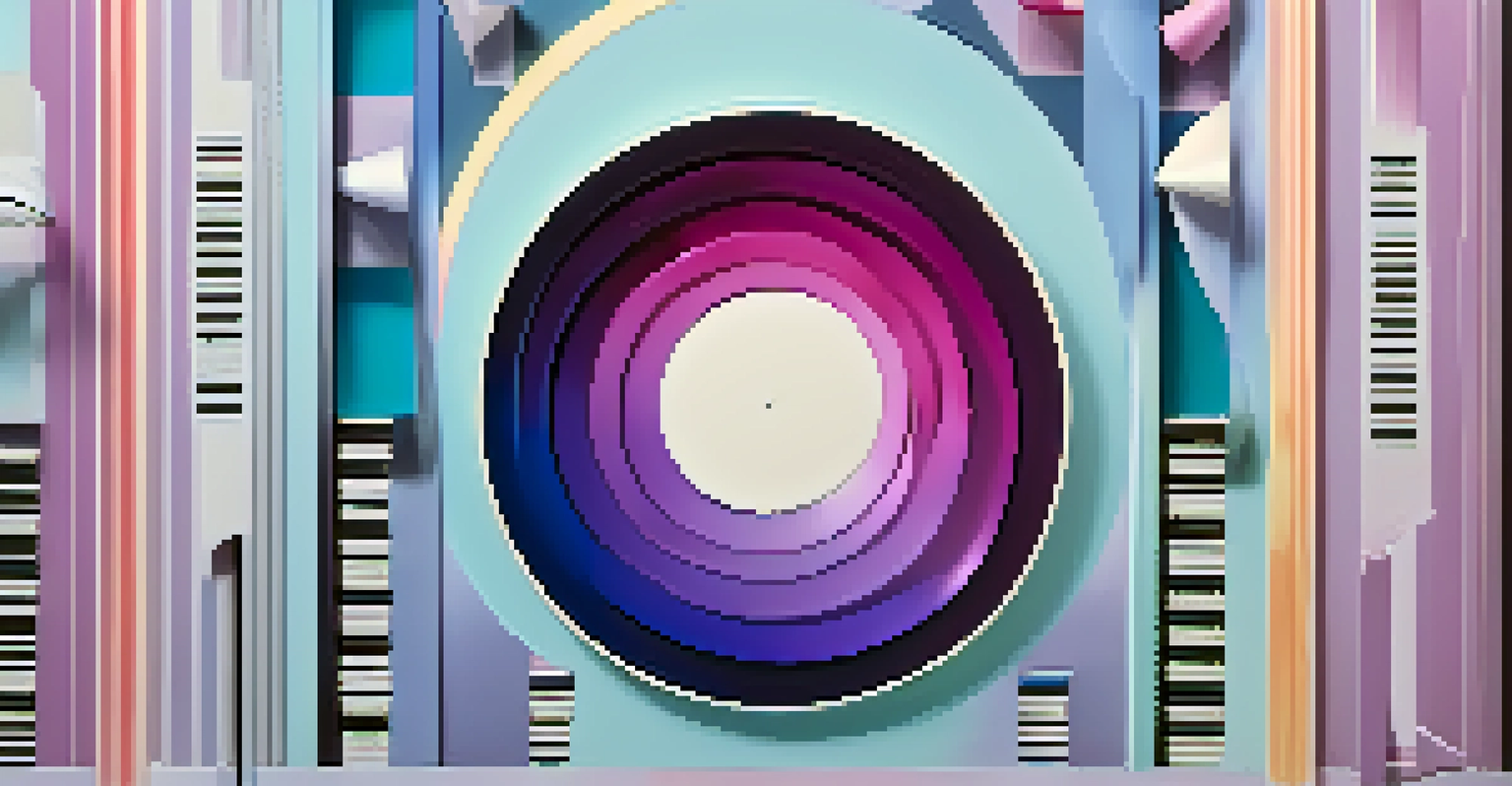Understanding Reverb: Types, Techniques, and Best Pedals

What is Reverb and Why is it Important in Music?
Reverb, short for reverberation, is the auditory phenomenon that occurs when sound reflects off surfaces in an environment. Think of it as the echo you hear in a large hall or a cozy bathroom; it gives depth and space to music. Without reverb, audio can feel flat and lifeless, much like a painting without shadows.
Reverb is the space that surrounds the sound, shaping our perception of it.
In music production, reverb is essential for creating a sense of atmosphere and texture. It helps to place sounds in a space, allowing listeners to feel as if they’re part of the experience. Imagine listening to a song without any reverb; it would feel like the artist is performing in a tiny, echo-less room.
Understanding reverb can transform your music, making it richer and more immersive. Whether you're recording in a studio or performing live, mastering reverb enables you to craft soundscapes that resonate with your audience.
Different Types of Reverb: Natural vs. Artificial
Reverb can be broadly categorized into natural and artificial types. Natural reverb occurs in physical spaces, while artificial reverb is created using electronic devices or software. Natural reverb is influenced by the dimensions and materials of a space, such as a cathedral or a small room.

Artificial reverb, on the other hand, includes various algorithms and effects that simulate different environments. These can mimic anything from a small room to a vast hall, providing musicians with endless creative possibilities. It's like having a personal sound engineer who can recreate any space you desire.
Reverb Adds Depth to Music
Reverb enhances music by creating a sense of space and atmosphere, making audio feel richer and more immersive.
Both types have their place in music production. Natural reverb might be preferable for recordings that aim for authenticity, while artificial reverb is often used for its versatility in mixing and mastering.
Exploring the Key Types of Reverb Effects
Within the realm of reverb, you'll find several distinct effects such as plate, spring, and hall reverb. Plate reverb, created by vibrating metal plates, delivers a smooth, rich sound, making it a favorite for vocals. It’s like wrapping your voice in a warm blanket of sound.
The power of sound is in its ability to transport us, and reverb is the magic that makes it happen.
Spring reverb, commonly found in guitar amplifiers, offers a more metallic and resonant quality. Picture the sound of a surf rock band from the '60s; that’s the signature vibe of spring reverb. It’s compact and often associated with a retro aesthetic.
Hall reverb simulates the expansive sound of a concert hall, providing a lush backdrop for orchestral music. Each type of reverb has unique characteristics, allowing musicians to choose the perfect fit for their sound.
Reverb Techniques: How to Use Reverb Effectively
Using reverb effectively involves understanding how to blend it with other elements of your mix. A common technique is to apply reverb to vocals or instruments to create a sense of space without overpowering the original sound. Think of it as seasoning your food; just a pinch can enhance the overall flavor.
Another technique is to use different reverb types for various tracks to create depth. For example, you might use hall reverb on vocals for a grand sound while applying plate reverb to drums for a tighter effect. This layering helps create a more dynamic listening experience.
Types of Reverb Explained
Reverb can be categorized into natural and artificial types, each serving different purposes in music production.
Additionally, adjusting the decay time and wet/dry mix can significantly impact the overall sound. Experimenting with these settings allows you to find the perfect balance that enhances your music without muddying it.
The Role of Reverb in Live Performance Settings
In live performances, reverb plays a vital role in shaping the overall sound experience. It helps to create an immersive environment that engages the audience, enhancing their connection to the music. Imagine attending a concert where the sound feels alive and wrapped around you; that’s the power of well-placed reverb.
However, live settings can pose challenges, as too much reverb can create a muddy sound. Sound engineers often adjust reverb levels based on the venue's acoustics, ensuring clarity and presence. The goal is to strike a balance that enhances without overwhelming.
Using reverb pedals during live performances allows artists to manipulate their sound on the fly. This adaptability can elevate a performance, making it memorable for both the artist and the audience.
Top Reverb Pedals: A Guide to Your Best Options
When it comes to choosing reverb pedals, there are numerous options available, each with unique features. Popular choices include the Strymon BigSky, which offers a wide variety of reverb types and stunning sound quality. It's like having a high-end studio reverb at your feet.
The TC Electronic Hall of Fame is another great option, known for its user-friendly interface and affordability. Its versatility makes it suitable for guitarists and vocalists alike, ensuring that everyone can find just the right sound.
Effective Reverb Techniques
Mastering reverb techniques, such as blending and adjusting settings, can elevate sound quality without overwhelming the listener.
For those seeking something more compact, the Electro-Harmonix Holy Grail Nano delivers rich reverb in a small package. This pedal is perfect for musicians who want to add depth without taking up much space on their pedalboard.
Conclusion: Mastering Reverb for Your Sound
Mastering reverb can significantly enhance your music, adding depth and emotion to your tracks. Whether you opt for natural or artificial reverb, understanding the various types and techniques can elevate your sound to new heights. It’s a powerful tool that, when used wisely, can transform simple melodies into captivating soundscapes.
Experimenting with different reverb settings and pedals will help you discover what resonates best with your style. Don't hesitate to try out various combinations; the beauty of reverb is in its versatility. Think of it as an artist mixing colors on a palette—each choice contributes to the overall masterpiece.

As you incorporate reverb into your music, remember that less can often be more. Finding the right amount of reverb will create a polished sound that engages listeners and makes your music memorable.